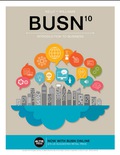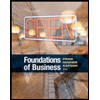
EBK BUSN
10th Edition
ISBN: 8220103648738
Author: Kelly
Publisher: YUZU
expand_more
expand_more
format_list_bulleted
Question
Chapter 6, Problem 5LO
Summary Introduction
To discuss: The reason for the limited liability firms to become more popular type of business ownership.
Expert Solution & Answer
Want to see the full answer?
Check out a sample textbook solution
Students have asked these similar questions
Zbsbwhjw8272:shbwhahwh Zbsbwhjw8272:shbwhahwh
Zbsbwhjw8272:shbwhahwhZbsbwhjw8272:shbwhahwhZbsbwhjw8272:shbwhahwh
(Do not use Excel) I like to see the work of how to solve the problem.
The investment banking firm of Doots Incorporated. will use a dividend valuation model to appraise the shares of the Straight Fence Corporation. Dividends (D1) at the end of the current year will be $2.70. The growth rate (g) is 7 percent and the discount rate (Ke) is 13 percent.
a. What should be the price of the stock to the public?
b. If there is a 8 percent total underwriting spread on the stock, how much will the issuing corporation receive?
c. If the issuing corporation requires a net price of $38.30 (proceeds to the corporation) and there is a 7 percent underwriting spread, what should be the price of the stock to the public? (Round to two places to the right of the decimal point.)
California Homes Associates is about to go public. The investment banking firm of Dillon and Associates is attempting to price the issue. The building industry generally trades at a 25 percent discount below the P/E ratio on the Standard & Poor’s 500 Stock Index. Assume that index currently has a P/E ratio of 30. The firm can be compared to the building industry as follows:
CA Homes Building Industry Growth rate in earnings per share ............... 16% 13% Consistency of performance ...................... Increased earnings Increased earnings
3 out of 5 years 2 out of 5 years
Debt to total assets.................................... 64%…
Chapter 6 Solutions
EBK BUSN
Knowledge Booster
Similar questions
- Use the Feynman technique throughout. Assume that you’re explaining the answer to someone who doesn’t know the topic at all:arrow_forwardUse the Feynman technique throughout. Assume that you’reexplaining the answer to someone who doesn’t know the topic at all: 4. Draw a Keynesian AD curve in P – Y space and list the shift factors that will shift theKeynesian AD curve upward and to the right. Draw a separate Classical AD curve in P – Yspace and list the shift factors that will shift the Classical AD curve upward and to the right.arrow_forwardhttps://investor.exxonmobil.com/sec-filings/annual-reports/content/0000034088-25-000010/0000034088-25-000010.pdf Use link to help me answer my questions please in picturearrow_forward
- Use the Feynman technique throughout. Assume that you’re explaining the answer to someone who doesn’t know the topic at all: 10. What is the mechanism or process that allows the expenditure multiplier to “work” in theKeynesian Cross Model? Explain and show both mathematically and graphically. What isthe underpinning assumption for the process to transpire?arrow_forwardUse the Feynman technique throughout. Assume that you’re explaining the answer to someone who doesn’t know the topic at all: 15. How is the Keynesian expenditure multiplier implicit in the Keynesian version of the AD/ASmodel? Explain and show mathematically. (note: this is a tough one)arrow_forwardUse the Feynman technique throughout. Assume that you’re explaining the answer to someone who doesn’t know the topic at all: 13. What would happen to the net exports function in Europe and the US respectively if thedemand for dollars rises worldwide? Explain why.arrow_forward
- 20. Given the mathematical model below, solve for the expenditure multiplier for a) government spending, G; and b) for consumer taxes, T. (medium difficulty) Y=C+I+G C=Co+b(Y-T) 1 = 10 T=To+tY G = Go+gYarrow_forwardUse the Feynman technique throughout. Assume that you’re explaining the answer to someone who doesn’t know the topic at all: 11. What exactly is a rectangular hyperbola and what relevance is it to classical economics?arrow_forwardUse the Feynman technique throughout. Assume that you’re explaining the answer to someone who doesn’t know the topic at all: 9. Explain the difference between absolute and comparative advantage in a family setting, i.e.using parents and children. What can we glean from knowing about comparative andabsolute advantages?arrow_forward
- Use the Feynman technique throughout. Assume that you’re explaining the answer to someone who doesn’t know the topic at all: 18. Explain why most economists believe it is absolutely necessary to allow free trade in aneconomy. Why is it harmful (under most circumstances) to have tariffs and trade barriers?arrow_forwardUse the Feynman technique throughout. Assume that you’re explaining the answer to someone who doesn’t know the topic at all: 19. How does the multiplier work in theory? How would you interpret Robert Barro’s empiricalfindings of a multiplier (note, not the MPC) of 0.8? What about Christine Romar’s finding ofa multiplier of 1.5?arrow_forwardUse the Feynman technique throughout. Assume that you’re explaining the answer to someone who doesn’t know the topic at all: 16. Explain the difference between absolute and comparative advantage. Be specific. How woulda country (or person) know that they had such an advantage?arrow_forward
arrow_back_ios
SEE MORE QUESTIONS
arrow_forward_ios
Recommended textbooks for you
 Foundations of Business (MindTap Course List)MarketingISBN:9781337386920Author:William M. Pride, Robert J. Hughes, Jack R. KapoorPublisher:Cengage Learning
Foundations of Business (MindTap Course List)MarketingISBN:9781337386920Author:William M. Pride, Robert J. Hughes, Jack R. KapoorPublisher:Cengage Learning Foundations of Business - Standalone book (MindTa...MarketingISBN:9781285193946Author:William M. Pride, Robert J. Hughes, Jack R. KapoorPublisher:Cengage Learning
Foundations of Business - Standalone book (MindTa...MarketingISBN:9781285193946Author:William M. Pride, Robert J. Hughes, Jack R. KapoorPublisher:Cengage Learning

Foundations of Business (MindTap Course List)
Marketing
ISBN:9781337386920
Author:William M. Pride, Robert J. Hughes, Jack R. Kapoor
Publisher:Cengage Learning

Foundations of Business - Standalone book (MindTa...
Marketing
ISBN:9781285193946
Author:William M. Pride, Robert J. Hughes, Jack R. Kapoor
Publisher:Cengage Learning
